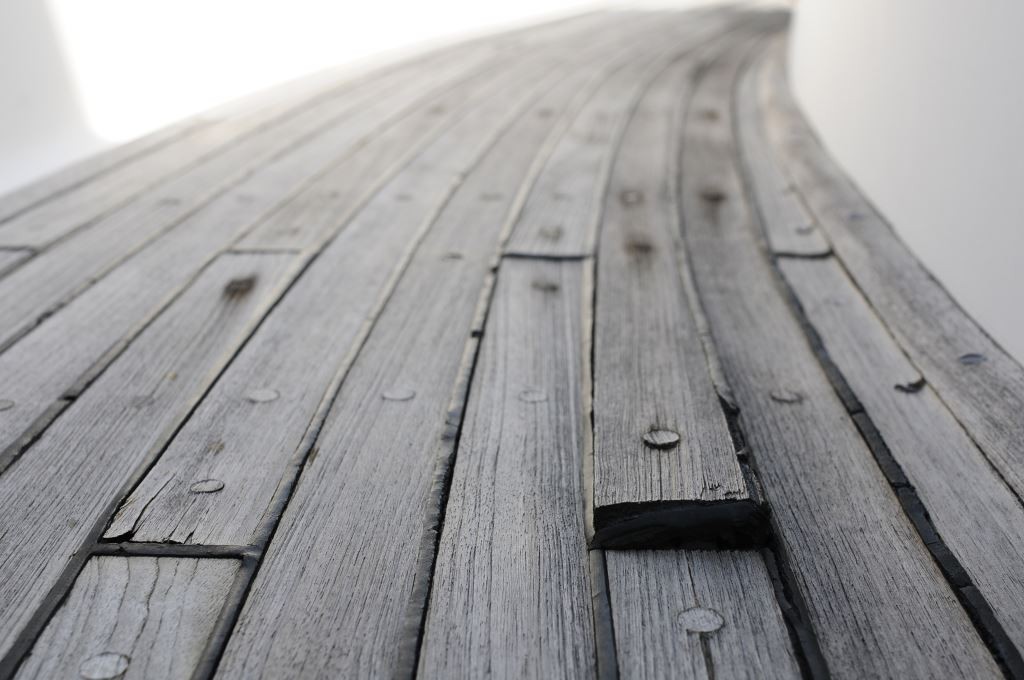From the Masthead
It’s no understatement to say access to critical machinery, engineering and bilge areas is vitally important. It’s a subject on which virtually all boat owners and most builders agree, and yet I routinely encounter inaccessibility, and in many of those cases it’s the result of carpeting. For several reasons, hindered access being chief among them, I am no fan of carpeting, in fact I really hate it; I find myself cursing it on so many occasions, especially when inspecting a vessel or troubleshooting a problem.
A couple of weeks ago, while conducting an inspection aboard a 58-foot motor yacht, I encountered a fuel leak; several inches of diesel sloshed beneath the aft berth. Accessing the bilges around the berth required the removal of wall to wall carpeting, which had been installed with tack strips. The only thing I hate more than carpeting is tack strips. In another recent case I found myself executing an unintended gymnast-like split (I’m limber, but not that limber) when carpeting in a lazarette slid as I stepped onto it.
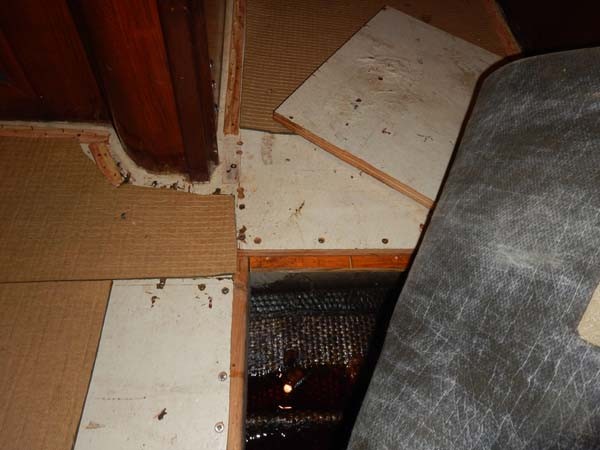
If carpeting in a cabin is bad, carpeting in engineering spaces, engine rooms and lazarettes, is worse. In many cases gear is installed on portions of it, making lifting to access hatches difficult and time consuming. In the event of flooding, where seconds can count for access to a leak or seacock, carpeting can take far too long to remove. When placed over gelcoat, carpeting can, as noted above, slide, setting up an injury scenario. If all that isn’t bad enough, carpeting in engine rooms represents a fire hazard. Even if the product is flame-retardant, if soaked with fuel, oil or even coolant, it will burn. Did I mention I hate carpeting?
This month’s eMagazine feature article is part one of a two part series; it covers the subject of conducting a pre-offer evaluation of a vessel. I hope you find it both interesting and useful.
I’ll be headed to China in August and Taiwan in October. If you’d like to chat with me about inspecting a vessel you are having built, or visiting a yard you are considering for a new build, please feel free to contact me.
A Boat Buyer’s ‘Top Ten’ Guide to a Pre- Offer Evaluation
Part I
(This article is based on a lecture delivered at the Fort Lauderdale Boat Show)
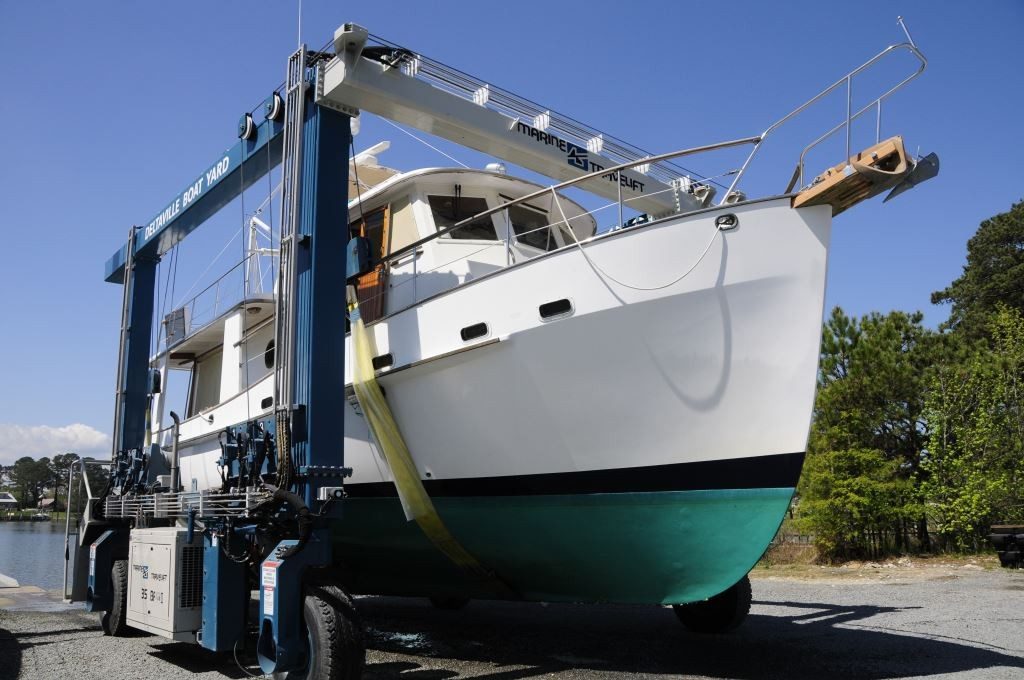
A little pre-offer research may prevent considerable heart ache down the road.
It’s a scenario I encounter far too often, the listing looks great, and the boat seems to offer everything the buyer wants, the right number of staterooms, galley layout, range and speed. An offer is made, a deposit provided and the acquisition wheels are set in motion. In many cases, however, the would-be buyer fails to undertake the proper amount of pre-offer research and analysis, which ultimately leads to disappointment, soul searching and a re-evaluation of the new boat budget.
Of course no one wants to make an offer on a boat, and arrange and pay for hull and engine surveys, oil analysis, systems inspections, sea trial and a short haul, only to find out it is afflicted with problems that could have been identified much earlier on in the process, and with far less expense; in some cases without even setting foot aboard.
You can perform such a pre-evaluation by following these guidelines.
- Standards
Is the (new or relatively new) boat built to any recognized standard? If so, which ones and is compliance guaranteed by the builder? While assisting clients in selecting a new vessel I’ll suggest that they ask the selling broker/dealer or builder if the vessel is built to any standard. In some cases the answer is an all too quick, “Yes” however, when elaboration is requested it isn’t forthcoming. In some cases sales literature may make mention of “ABYC (American Boat and Yacht Council) membership” (‘membership’ is no guarantee of compliance, and ABYC does not ‘certify’ vessels, although the National Marine Manufacturer’s Association (NMMA) does offer a voluntary certification program), or “following CE (Conformité Européenne) Standards” (‘following’ doesn’t mean ‘conforms to’), however, this is far from a definitive, “Yes, this vessel is built to comply with the following ABYC Standards, AC and DC Electrical, Exhaust Systems, LP Gas, Bilge Pump Systems…” or, “Yes, this vessel complies with all CE certification requirements at the time of manufacture”. As an aside, there are over sixty ABYC Standards, and very few vessels comply with all of them, and thus when a representative responds “All of them” when asked with which standards the vessel complies, it should immediately make you suspicious, and at the very least prompt a request for additional information, in writing. For more on new builder compliance you can read this article.
The value of compliance with standards cannot be overstated. In the case of ABYC, CE/RCD, Canadian Small Vessel Regulations, AS/NZS (the Australian/New Zealand 3004.2:2008 electrical standards) it represents a rigorous third party threshold the builder must meet. In other cases, typically for larger or chartered vessels, there are a slew of other guidelines established by “classification societies”, compliance with one of these yields what’s known as a “classed vessel”. These include American Bureau of Shipping (ABS), Det Norsk Veritas (DNV), Registro Italiano Navale (RINA), and the Maritime and Coast Guard Agency (MCA) to name a few. Again, not all are created equal, some are more rigorous, others introduce complexity whose value is debatable for the application, or they are related to chartering, which is of little value of you don’t intend to charter the vessel. While not mandatory in the US, third party compliance is mandatory for vessels sold in the European Union, Canada, Australia and New Zealand.
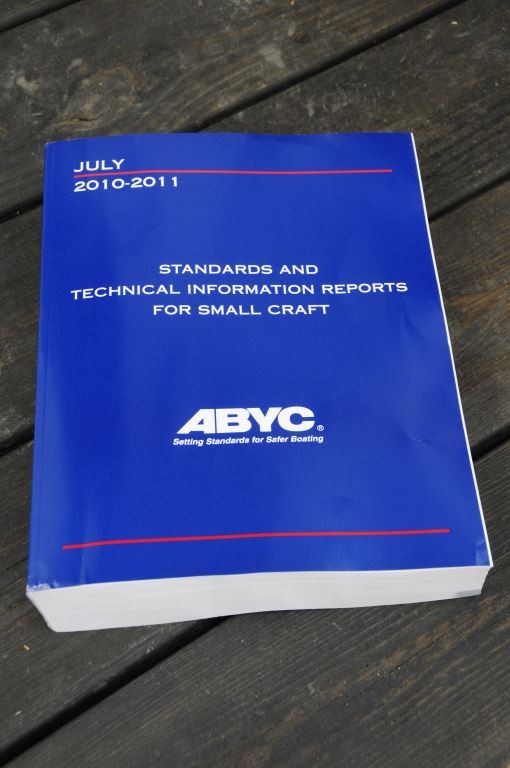
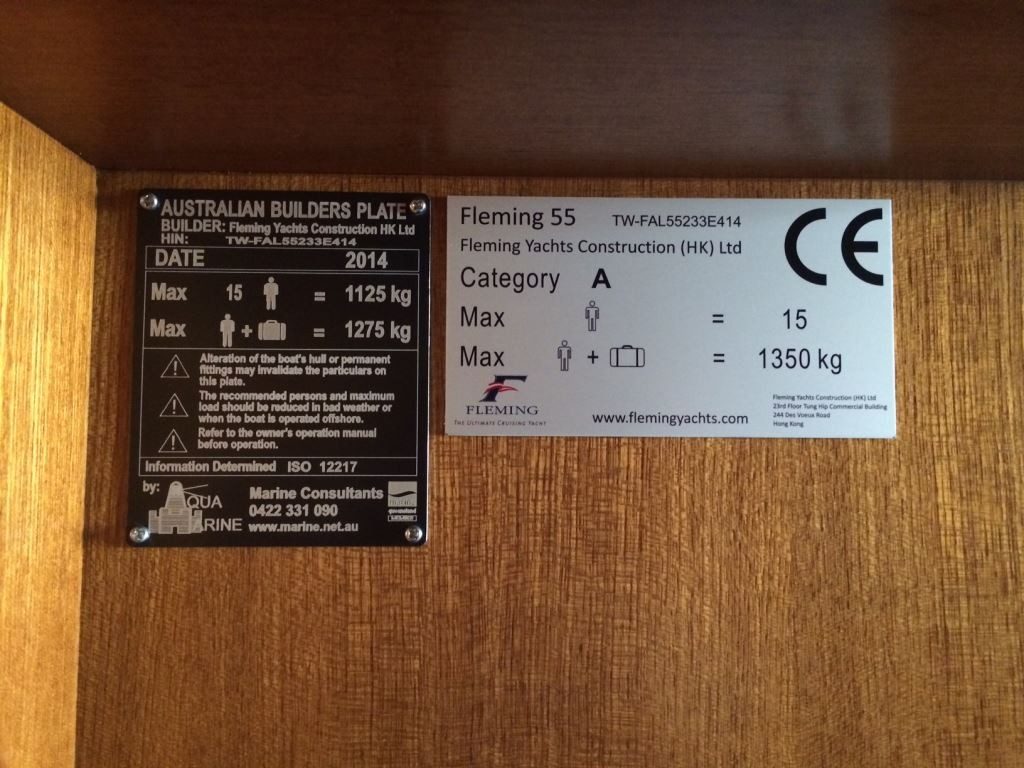
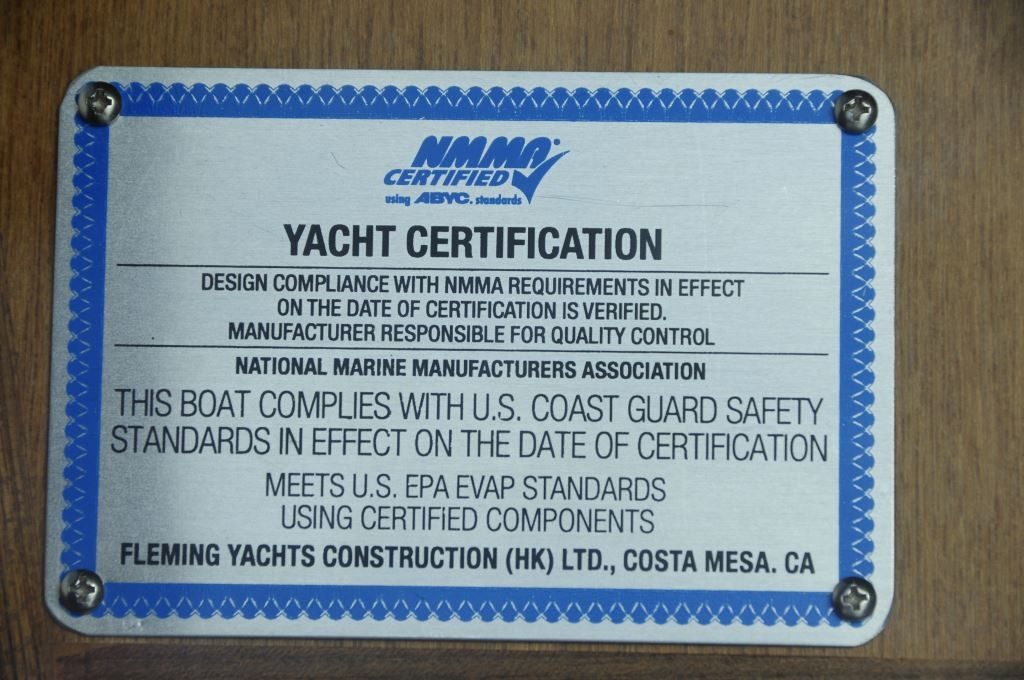
Vessels built to comply with third party standards can offer added value, reliability and safety. The standard or classification placard should be clearly visible.
While it’s no guarantee of overall quality, design, comfort or sea-keeping abilities, standards compliance and classification frequently results in a more reliable and safer (and typically more expensive when compared to those that are not built to a standard or class) vessel.
Of course if the vessel is pre-owned then compliance with standards remains important, however, you are unlikely to receive any guarantees from the seller. Never the less, any repairs that are agreed upon as part of the sale should stipulate compliance with ABYC and/or other applicable standards. If the vessel is pre-owned and classed, i.e. ABS, DNV or others, determine if the classification is up to date.
- Follow the Instructions
For a new vessel, ask the broker, dealer or builder to agree that all equipment is installed per the manufacturer’s installation instructions. It seems strange that I need to say this, and yet the issue comes up repeatedly; in many cases, when I conduct an inspection I’ll make an entry that reads something like this, “The stuffing box installation fails to comply with the manufacturer’s installation instructions, the incorrect hose has been used, set screws are not stacked, the water supply pick up is located in the incorrect location”. And just as often, the builder or selling dealer will say, “We’ve done it that way for years, and it’s never been a problem”.
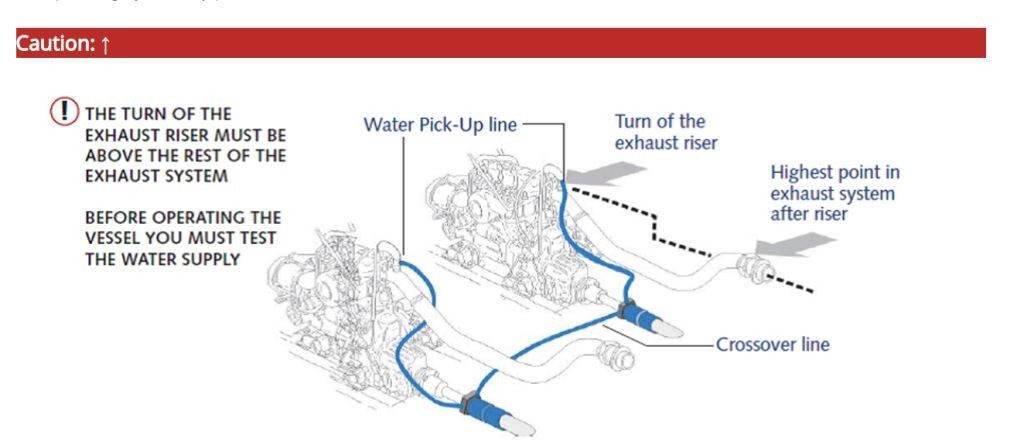
While seemingly obvious, many equipment installations on both new and pre-owned vessels fail to follow manufacturers’ requirements.
That response implies that the builder believes he knows more about installing this stuffing box than the people who manufactured it, and as such it means he is in fact agreeing to warrant it, forever. No one wants to do that and once that’s pointed out they’ll often agree to make the installation compliant.
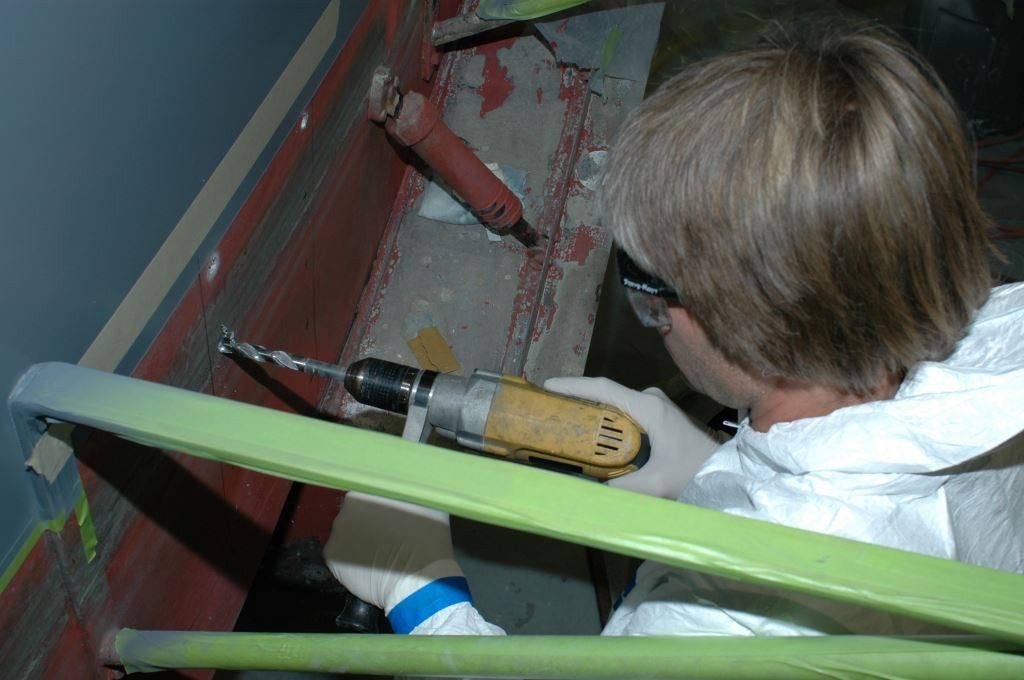
When installers dutifully follow manufacturer instructions when installing equipment, the likelihood of failures are reduced considerably, as well as ensuring warranty coverage. Doing so is also indicative of a level of overall good attention to detail.
- Construction Material
What material is used to build the vessel, fiberglass, steel, aluminum, wood, or wood/epoxy (cold molded)? Most recreational vessels are fiberglass or FRP (fiberglass reinforced plastic); it’s a relatively low risk option, provided it’s built properly. While there are a few notable exceptions, most FRP vessels are solid below the waterline, while relying on a cored sandwich or “cored composite construction” above the waterline, and for cabin sides, tops, and decks. This consists of fiberglass skins inside and out and a timber or synthetic, of which there are many, core material.
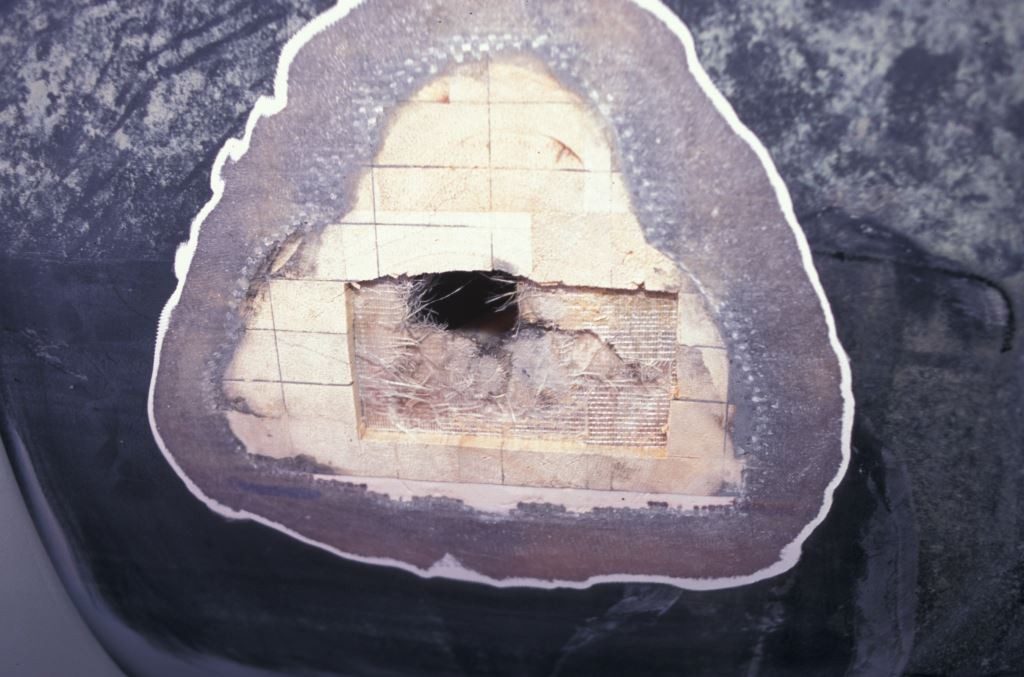
Each construction material carries with it advantages and disadvantages.
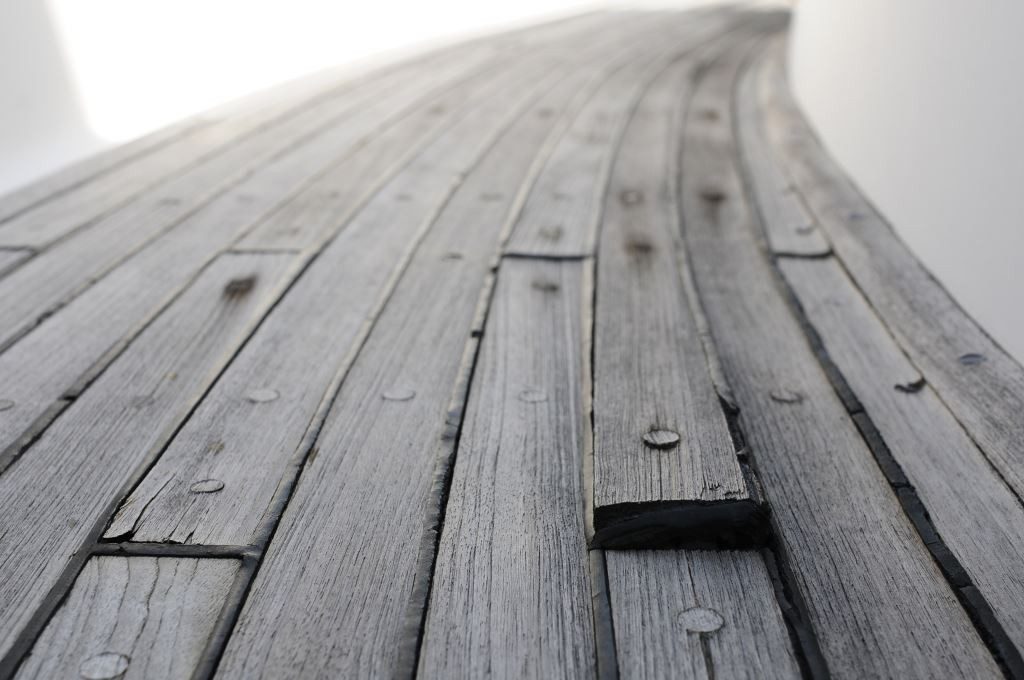
While attractive, teak decks add a maintenance dimension to any vessel, which must be carefully weighed.
In a valid effort to decrease weight, some builders choose to core their hulls both above and below the waterline, and while that’s not a deal killer by any means, it does increase the risk of water migration into the core, even if the core is not hygroscopic. Unlike balsa (or any timber) synthetic core that will not absorb water because it is made from a closed cell material, however, water can still migrate into the gaps or kerfs between the core blocks, in a process known as channeling. These gaps are supposed to be filled with resin during the lamination process; and yet, for a variety of reasons, this often does not occur.
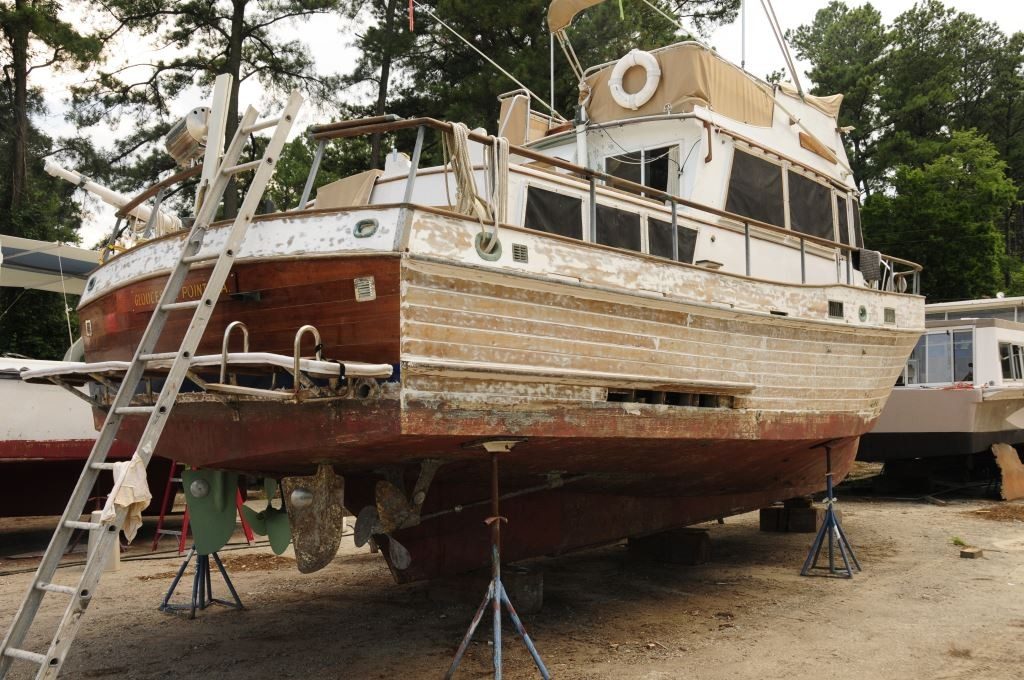
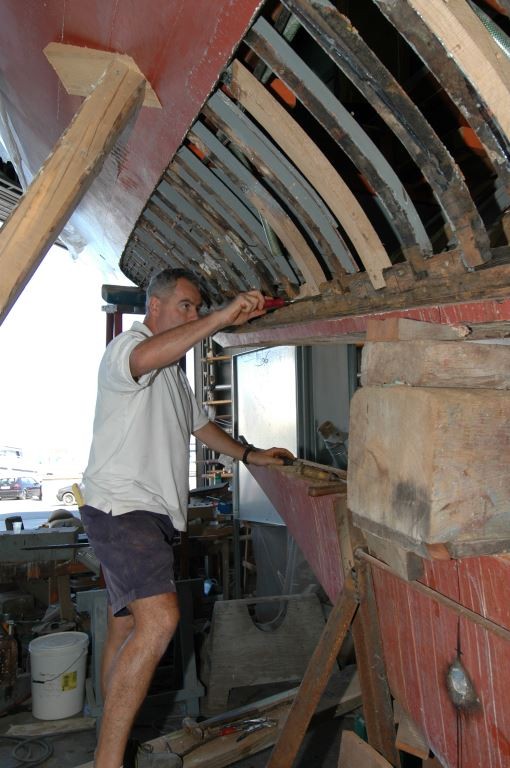
There’s no denying the beauty and romance of a timber vessel, however, ownership is appropriate only for those who understand its needs, and are prepared to carry out necessary and regular maintenance, or pay others to do so.
Ultimately, virtually all core saturation is problematic and costly, water can enter core anywhere it’s present, above or below the waterline, however, it’s of considerably greater concern, and expense, if it does so in the hull below the waterline. Solid FRP bottoms don’t suffer from this problem, with the trade-off being they are heavier. If it’s a displacement vessel it’s a non-issue, while “heavier” and “planing” don’t necessarily go well together (weight and fuel efficiency are directly related for planing vessels), making a cored bottom potentially more attractive. Naturally there are exceptions to every rule; many semi-planing vessels are solid FRP below the waterline, and for the amount of time they spend at planing speeds the weight, and trade-off, is for the most part a non-issue. Once again, cored bottoms done properly are stiff, strong and light. That’s no guarantee, however, that they weren’t mistreated at some point. A grounding can expose core, causing water migration, as well as after-market installations like transducers or trim tabs.
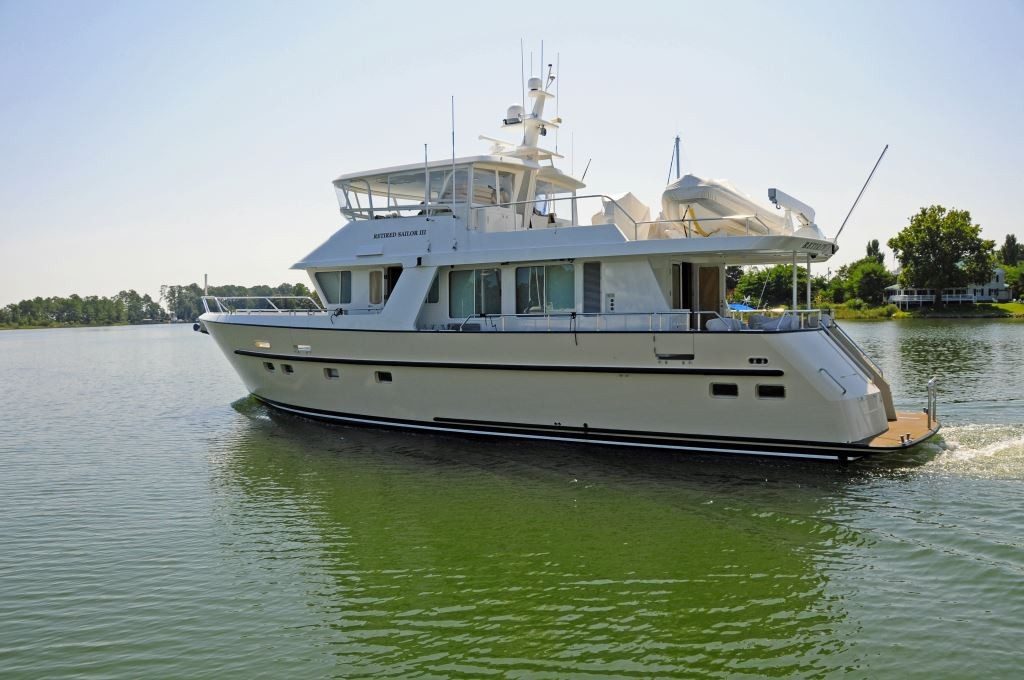
When properly executed, an aluminum vessel is indistinguishable from fiberglass. Painted aluminum, does, however, require far more in the way of upkeep.
A few years ago I encountered a vessel that simply refused to float on her lines. It was ultimately determined that a transducer had been installed just a few years prior, by the selling dealer, when the vessel was new, using fasteners screwed directly into the cored bottom. Over time water migrated throughout nearly the entire bottom, adding weight and compromising structural integrity. The builder and dealer had gone belly up, leaving the hapless owner holding the bag on a vessel that was essentially worthless and could not be sold.
Cold-molded vessels are in a similar category as cored FRP, if done right they are strong and long-lived. Failure to seal or ‘close out’ penetrations into the timber core, or failure to properly seal it during the build process, however, can lead to significant and costly water damage that is not immediately obvious.
With a moisture meter, in the right, skilled hands, most of these issues can be identified relatively easily. Even a careful visual inspection can often yield meaningful results, i.e. brown water dripping from cored or cold-molded structures almost always is indicative of water saturation. For more on the subject of cored composite construction, see this article.
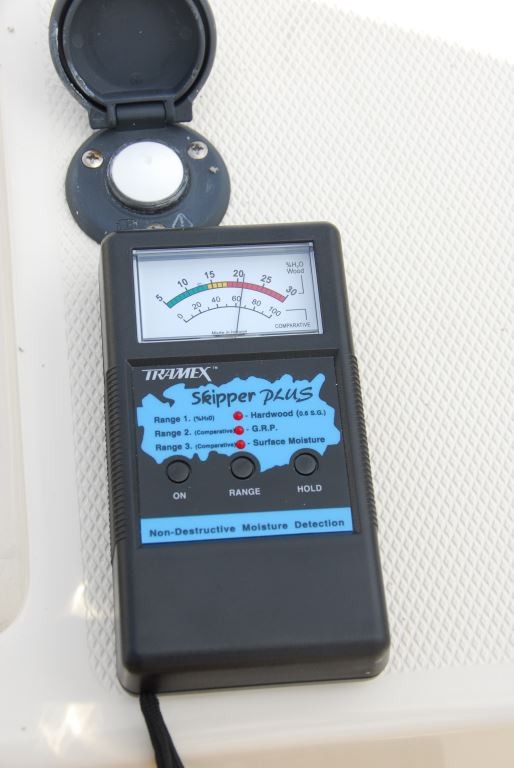
Cored composite construction is strong, light and stiff, it’s been proven over many thousands of hulls. It is, however, susceptible to water entry at hull and deck penetrations, during or after the build. All penetrations on cored structures must be properly sealed in a process known as “close out”. Sealant must never be relied upon to keep water out of core, and simply coating exposed core with resin is a half-measure at best.
The other issue to be conscious of where FRP is concerned is osmotic blisters. It’s a complex subject, around which a veritable fire storm of misinformation swirls. Today, osmosis is easily prevented in the build process, every FRP boat should be built utilizing a vinyl ester ‘skin coat’, or the entire laminate should be vinyl ester or epoxy, both of which are blister -resistant. Be sure to ask if this is the case, and if osmotic blisters are covered under the warranty; they should be for at least five years. For a pre-owned vessel the issue is of equal concern, and perhaps more so since there’s no warranty.
Traditional, all polyester hulls are more prone to osmosis, however, it is by no means a given. I’ve encountered 30 year old polyester hulls that were pristine, and three year old polyester hulls that were riddled with blisters. Be especially mindful of vessels that have recently been moved from one type of water to another, fresh to salt for instance, as this can trigger a blister outbreak. For more on this subject you can read this article.
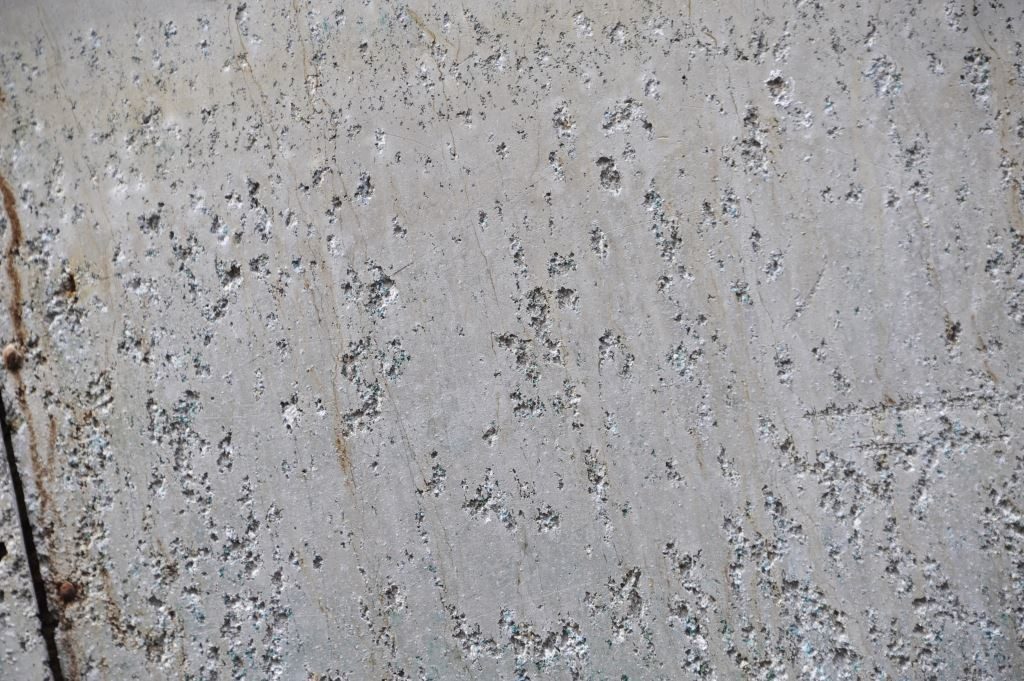
Aluminum is versatile, easy to work with and naturally corrosion resistant, however, it is susceptible to poultice and galvanic corrosion.
Steel and aluminum vessels have much to offer. While they are noted for their durability, resilience and fire resistance, they also enable builders to conceive of and build a unique design without investing in a mold (the same is true of cold-molded vessels). For traditional FRP vessels molds are a necessary and costly evil, an expense that must be amortized over several vessels, while changes to the design can be difficult and expensive. With steel and aluminum, however, changes can be made with relative ease in the design program, even during the build process by cutting and welding.
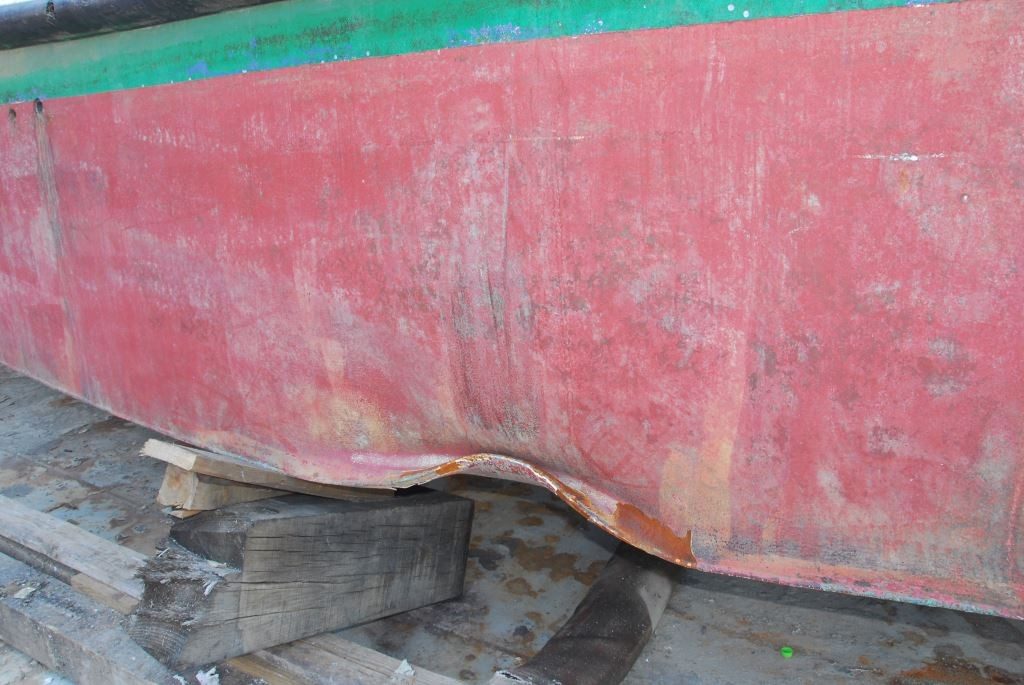
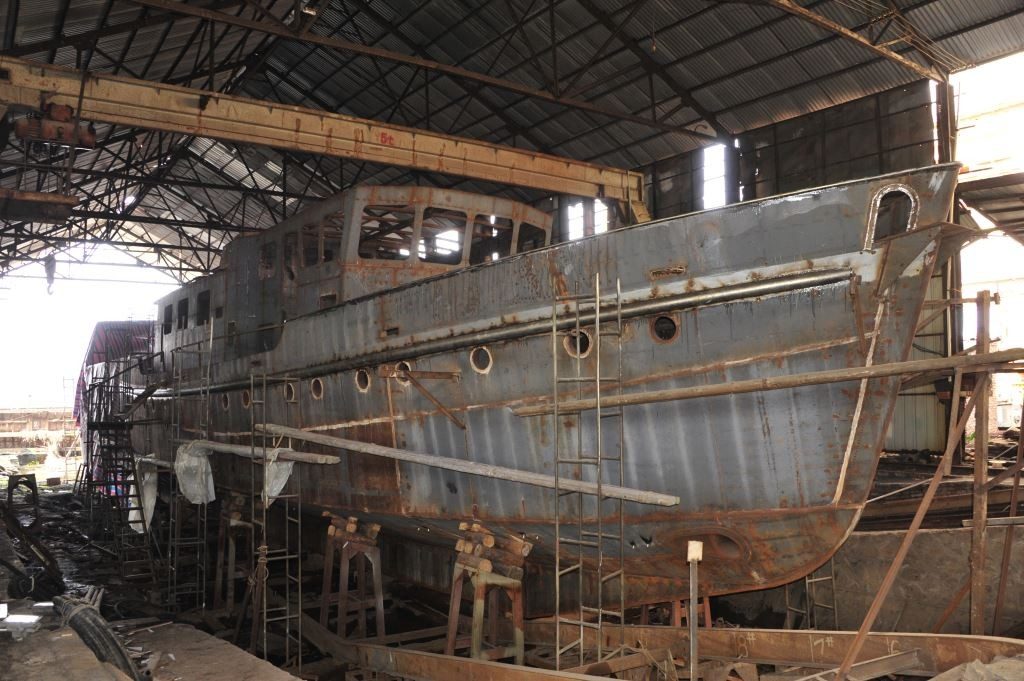
Steel offers advantages of customization, fire resistance and extreme strength; it will deform considerably before failing. Rust of course is an issue, however, it can be kept at bay if properly coated and maintained.
As is often the case, there’s no free lunch, however, as steel and aluminum are prone to rust and corrosion. And while corrosion prevention coatings have advanced significantly in the last decade, it remains a potential problem, especially for aluminum, or at least a concern for buyers, thereby affecting resale value (aluminum’s corrosion resistance can actually be greater if it’s left un-coated). Like every vessel, those made from steel and aluminum must be carefully inspected, signs of rust and lifting paint are frequently worse than they look, so keep a sharp lookout and don’t let a seller tell you, “It’s only cosmetic”. The jury is out until you have confirmed otherwise. For more on painted aluminum issues see this article and for more on aluminum corrosion see this article
- Tanks
Tanks play an exceptionally important role in vessel operation, reliability and cost of ownership. Most are not designed to be replaced, and as such making certain they are in good condition, properly installed, and made form a material that is known to last, is an important evaluation factor.
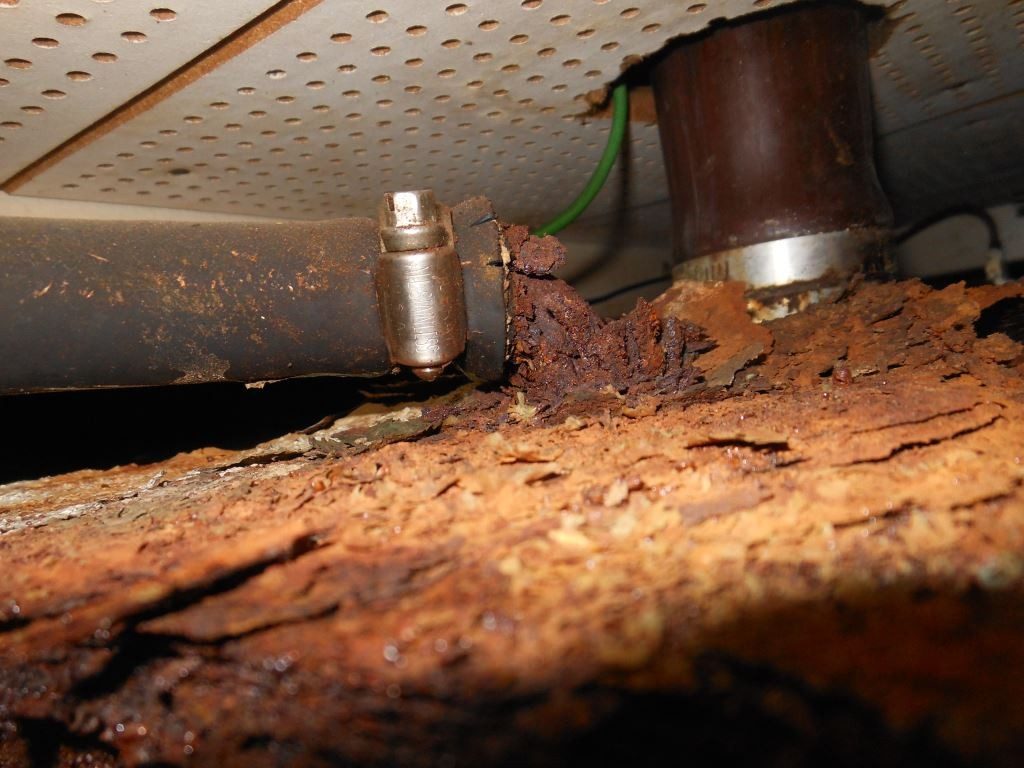
One of the more common forms of failure for steel tanks is from the outside in, or top down, the result of water leaks from the deck. Access to tanks, metallic tanks in particular, for inspection is, therefore, essential.
A range of materials can be used, each with its own set of advantages and disadvantages. For fuel they include aluminum, mild steel, stainless steel, polyethylene and fiberglass; (ideally) for sanitation polyethylene and fiberglass; and for potable water stainless steel, polyethylene and fiberglass.
Perhaps more important than which materials are ideal are those that are less than ideal. For fuel mild steel tanks are prone to rust, often from water dripping onto the top of the tank, while aluminum tanks suffer from poultice corrosion, a phenomenon that occurs when a tank is continuously exposed to stagnant water. Stainless steel tanks, while seemingly indestructible, also suffer from stagnant water exposure, which can lead to crevice corrosion. For all of these reasons, any metallic tank whose exterior cannot be inspected is cause for concern.
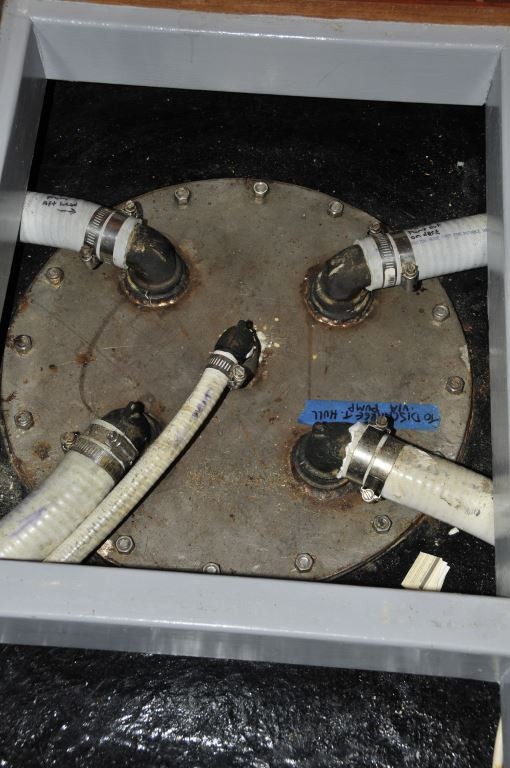
The range of tank materials is considerable, from steel and aluminum to polyethylene and fiberglass, with the latter being among the most durable and long-lived.
Given the choice, and provided the right resins are used, fiberglass is perhaps the best material for fuel tanks; it is long-lived, durable and corrosion-proof. I’ve opened and cleaned 30-year old fiberglass tanks, after which they looked like new. I can’t say the same of any of the metallic options. While polyethylene tanks are equally as resistant to decay, they do have some limitations regarding customizability, baffling and inspection ports. They do not, however, corrode.
Interestingly, black and potable water tanks have much in common where materials are concerned, and non-metallic options are the best, with aluminum offering perhaps the worst of all worlds.
Strong consideration should be given to cleaning the fuel tanks of pre-owned diesel-powered vessels, particularly vessels that have remained dockside in warm climates for extended periods, as they are notorious for accumulation of debris in tank bottoms. Primary fuel filters can offer a glimpse to the interior of a tank, however, if they’ve been recently cleaned then that observation is no longer valid. Proper tank cleaning requires access to the entire tank interior, which means entry into every baffled chamber, either though external inspection ports or via a “manhole” and removable baffle sections. Determine if the fuel (and other) tanks on the vessel you are considering have this capability.
I’ve written extensively about tanks on several occasions, including fuel tank installation and design ; sanitation systems and tanks and potable water systems. Additionally, this article covers cleaning diesel fuel tanks.
- Electrical Systems
A vessel’s AC and DC electrical system should be able to provide you with the power you need, for your intended cruising style. It also often represents the longest deficiency section in the inspection reports I write.
In the broadest of terms, if your goal is to minimize generator run time and maintenance, and hang on the anchor for days at a time, then you want a DC-centric vessel, one whose battery bank is capable of supplying the necessary amp-hours, as well as a system that is capable of replenishing that bank in a reasonable period of time.
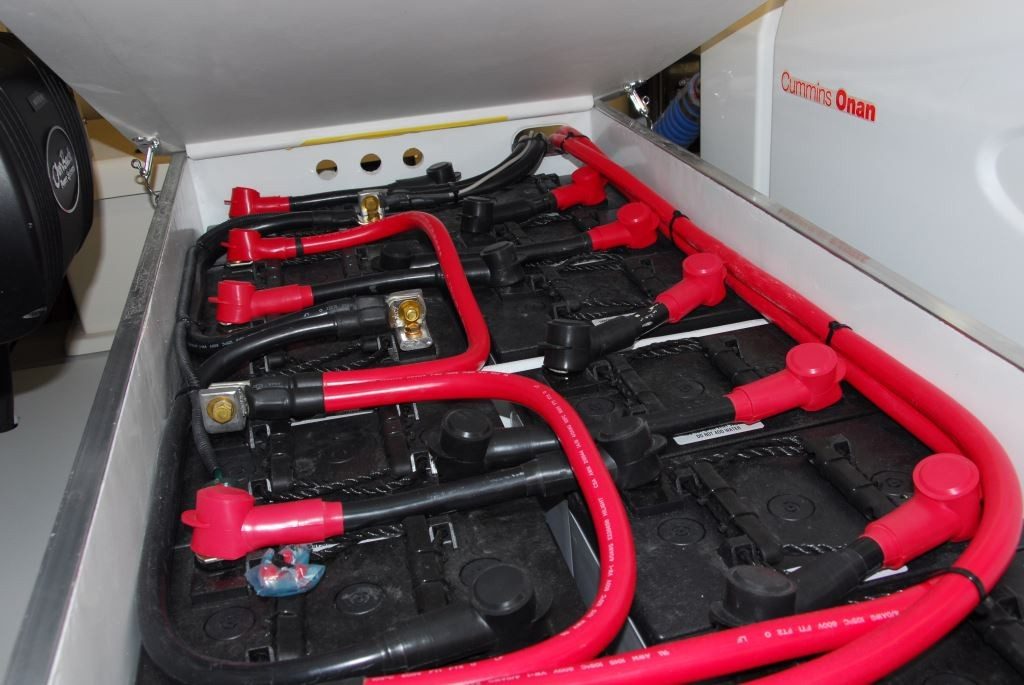
Vessels may be designed with an emphasis on AC or DC use.
While air-conditioning can be made to operate from batteries and inverters, generally speaking, while at rest and away from shore power, cooling the vessel typically requires use of a generator (it is possible to operate air-conditioning indefinitely while underway using large alternators and inverters). This arrangement would be AC-driven, relying on a generator for most vessel power needs, as well as heating and air-conditioning. Vessels that rely heavily on AC power, with no redundancy such as an inverter that can carry critical loads such as refrigeration, are typically equipped with two generators.
Neither system, AC or DC centric, is better than the other, both can work well, and each has its own advantages and disadvantages. The primary goal in a preliminary evaluation of such a vessel is in avoiding the error of selecting one that is designed to operate primarily on AC power, shore or a generator, while expecting long periods of battery-powered quiet ship operation at anchor.
Broadly speaking, vessels designed primarily for DC rather than generator operation tend to be more electrically complex, with larger battery banks, alternators, chargers and inverters, which often requires a higher degree of user understanding, input and management. Generator-dependent vessels, on the other hand, offer more in the way of turn-key operation. This article covers the subject of large battery banks used on DC-dependent vessels.
The other electrical issue worthy of consideration is the shore power on which the vessel is designed to operate, or more specifically the frequency. The US, Canada and Mexico, and much of Latin America, as well as a handful of other countries utilize 60 Hz, usually at 120/240 volts AC, while the rest of the world, with a few hybrid exceptions, relies on 50 Hz, at 240 volts. Voltage is relatively easy and comparatively inexpensive to convert using a transformer, therefore, a vessel requiring 120/240 volt “split phase” power can cruise to Europe and plug in to 240 volts and, using a transformer convert this to 120/240 volts. However, what the transformer can’t do is convert frequency, in Europe it’s 50 Hz, while in the US it’s 60 Hz. Converting frequency is complex, and expensive. Frequency converters are often large and they generate heat (which is wasted energy), which must be removed from the compartment. Without using a frequency converter, appliances, including refrigerators, washers and dryers, microwave ovens, stoves and air conditioners, may be damaged if operated on a frequency for which they are not designed.
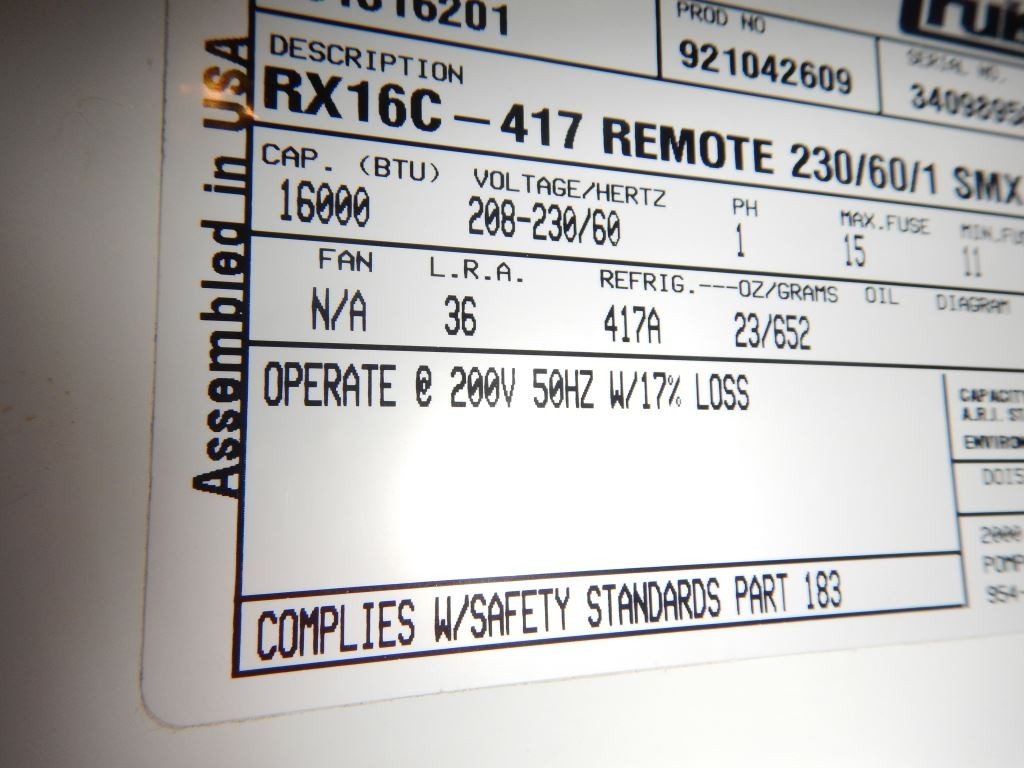
Some, but not all, air conditioning compressors are designed to operate on 50 Hz or 60 Hz, with an adjustment in voltage, and consequent change in output.
The alternative to the frequency converter, one that’s become more popular in the past five or seven years, involves using inverters and battery chargers to power a vessel’s frequency-sensitive loads while traveling, or living, abroad. While this approach often has power limitations, it can be made to work well, and it’s less costly and more versatile than a frequency converter.
I frequently receive calls from potential buyers, who have interest in purchasing a vessel, whose frequency is not native to the area in which they intend to cruise. While the vessel can be fully converted, (that may be mandated for registration in some cases, such as Australia), that’s no small task and often cost-prohibitive, making the frequency conversion or inverter route the only viable option.
If you are evaluating such a vessel, make certain you have a full understanding of the details and cost associated with conversion, and safely operating the vessel in areas other than its parent frequency. I’ve encountered ‘quick and dirty’ conversions that were rife with ABYC violations. I covered the installation and operation of shore power transformers in this article .

